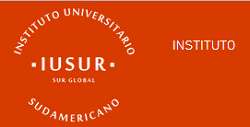The Curricular Alignment as a Technical Challenge for Educational Quality
DOI:
https://doi.org/10.25087/resur16a9Keywords:
Curricular alignment, Study program, Development of Study Programs, Curriculum.Abstract
This work is propose a methodology that relies on information and communication technologies to develop curricular frameworks with coherent, congruent, pertinent and perfectly aligned study plans and subjects, resulting in more efficient and dispersed learning. cognitive reduced to the maximum. This perspective refers that the curriculum developers are in the same paradigm that has not changed much from the beginning. The alignment or curricular alignment is considered here as the intentional, logical, psychological and operational sequencing that articulates the contents, the objectives, the perspectives and the applicable methodologies, through the use of a technology that guarantees the integrated flow, both of educational Principles and Foundations, as well as knowledge, values, habits, attitudes and prescribed aptitudes. Thus, the alignment was achieved with analytical methods of computer technology, from a spreadsheet to sequencing programs, optimization and graphing by network theory. The source of the data is the authors' practice in professional design work of the programs design og two doctorates, eight masters, one bachelor's degree, and two general secondary programs. In the main results of these studies, a reduction in the cognitive dispersion of the curriculum has been observed.
Downloads
References
Aguilar Vargas, L. Y., Carreño Cardozo, J. M., Galeano, A., Preciado Mora, G., & Espinosa, O. (2010). Acerca del rediseño curricular escolar por ciclos. Itinerario Educativo, AÑOXXIV, N, 213–238. Retrieved from https://epdfs.mx/docu/2e77b57/acerca-del-rediseño-curricular-escolar-por-ciclos--dialnet
Alberto Ramón, L. (2011). estrategy and cognition: the strategy execution process through cognitive alignment Estrategia y cognición: la ejecutabilidad de la estrategia a través del alineamiento cognitivo. AD-Minister, 5–20. Retrieved from http://pucrio.summon.serialssolutions.com/link/0/eLvHCXMwTZw_C4MwEMVDodCli9DmUyiaRHNZWytOUoqDm5icN5b-8fvTJCJ0fLfccMfjhve7gAFXUhlyUhdkrZVViW4SNgeDGhEgsM6XXtQDdLVu_9y8SdjOfk6saW79tU1DPGx8rT8XxvAFORa2vNgoEJwDWSkHRErkqOeCSlLSCpLaX-FndpxCSvy5RJoMOduTH-nMg81y35Kzw2DEoxvMfZXJJrNvRJ6y98K9q8eNSIus_AG52Tot
Arnaz, J. A. (1981). Guia para la elaboración de un perfil del egresado. Revista de Educación Superior.
Biggs, J. (2003a). ALIGNING TEACHING AND ASSESSING TO COURSE OBJECTIVES. Teaching and Learning in Higher Education: New Trends and Innovations, 13.17. Retrieved from https://www.dkit.ie/ga/system/files/Aligning_Reaching_and_Assessing_to_Course_Objectives_John_Biggs.pdf
Biggs, J. (2003b). Aligning teaching for constructing learning. What is constructive alignment? Defining the ILOs. Education, 94(11). Retrieved from http://egusdsecondaryed.pbworks.com/f/aligning_teaching_for_constructing_learning.pdf
Biggs, J. B. (1997). Construir el aprendizaje alineando la enseñanza: alineamiento constructivo. Calidad Del Aprendizaje Universitario.
Casarini Ratto, M. (2010). Fuentes del Curriculum. Teoria, Diseñ y Evaluacion Curricuale.
Coll, C. (1994). Fundamentos del curriculum. In Psicología y Curriculum.Una aproximación psicopedagógica a la elaboración del currículo escolar (p. 1:23). Retrieved from http://www.cucs.udg.mx/avisos/Martha_Pacheco/Software e hipertexto/Antologia_Electronica_pa121/Coll_cap2.PDF
Delors, J., Mufti, n’am Al, Amagi, I., Carneiro, R., Chung, F., Geremek, B., … Nanzhao, Z. (1996). La Educación encierra un Tesoro (UNESCO, Ed.). Retrieved from https://unesdoc.unesco.org/ark:/48223/pf0000109590_spa
Döbler, J., & Döbler, J. (2019). Constructive Alignment. In Prüfungsregime und Prüfungskulturen (pp. 31–34). https://doi.org/10.1007/978-3-658-25290-8_3
Doll, W. E. (2008). Complexity and the Culture of Curriculum. Educational Philosophy and Theory. https://doi.org/10.1111/j.1469-5812.2007.00404.x
Muñoz-López, T., Hernández-Cueto, J., MORÁN-DELGADO, G., & MARTÍNEZ-SOSA, V. (2019). Calculating Cognitive Dispersion of the curriculum. Journal of Systems and Educational Management, 6:19, 5–10. https://doi.org/10.35429/JSEM.2019.19.6.5.10
Muñoz López, T. (2020). La Actualización obligada y la Innovación permanente de la docencia. Gaceta Digital Universidad Autónoma de Coahuila, 26–27. Retrieved from https://issuu.com/mago.empresariales/docs/gaceta31_final?fr=sZWI4YTE3MDI0Nzg
Muñoz López, T., Guajardo Espinosa, J. M., & Chavero Ortiz, K. I. (2012). El Desarrollo Humano como emergencia sistémica: su clímax en perspectiva para la educación superior integral. In Universidad Autónoma de Coahuila (Ed.), 12o. Congreso Internacional Retos y Expectativas de la Universidad: “La educación superior en la formación integral para los estudiantes” (pp. 1–11). Retrieved from https://es.scribd.com/document/376138475/EL-DESARROLLO-HUMANO-COMO-EMERGENCIA-SISTEMICA-pdf
Muñoz López, T., Guajardo Espinosa, J. M., & Osoria García, S. (2015). COMUNICACIÓN: la comunicación socialmente responsable para el desarrollo y el cambio educativo. In M. M. Granat Ramos, A. E. Gutiérrez Leyton, & L. Sepúlveda García (Eds.), COMUNICACIÓN: la comunicación socialmente responsable para el desarrollo y el cambio educativo (Primera, pp. 219–236). Retrieved from https://fontamara.com.mx/argumentos/518-comunicacion-la-comunicacion-socialmente-responsable-para-el-desarrollo-y-el-cambio-educativo-arg225.html
Murillo, A. (2017). ¿Qué es innovación educativa? Retrieved October 14, 2020, from Observatorio de Innovación Educativa website: https://observatorio.tec.mx/edu-news/innovacion-educativa
Porter, A. C. (2012). Curriculum assessment. In Taylor y Francis (Ed.), Handbook of Complementary Methods in Education Research (pp. 141–159). https://doi.org/10.4324/9780203874769-13
Published
How to Cite
Issue
Section
License
Copyright (c) 2024 Temístocles Muñoz López, Marta Nieves Espericueta Medina, Lilia Sánchez Rivera, María Cristina Cepeda González

This work is licensed under a Creative Commons Attribution-ShareAlike 4.0 International License.









